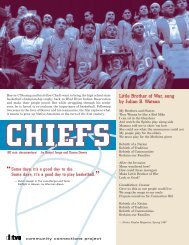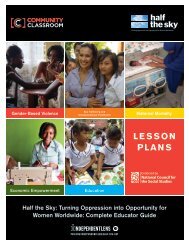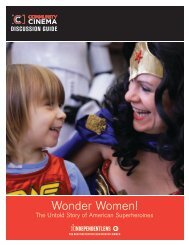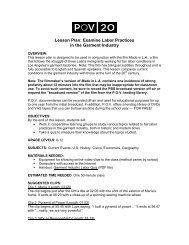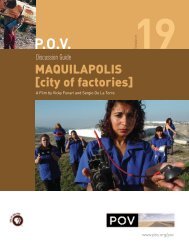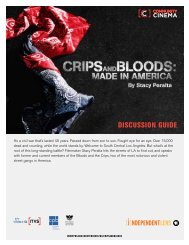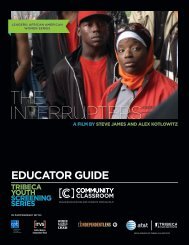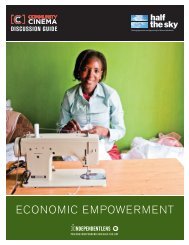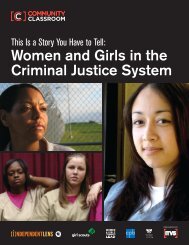Download Lesson Plan (PDF) - FutureStates
Download Lesson Plan (PDF) - FutureStates
Download Lesson Plan (PDF) - FutureStates
- No tags were found...
You also want an ePaper? Increase the reach of your titles
YUMPU automatically turns print PDFs into web optimized ePapers that Google loves.
COMMUNITY CLASSROOM: SEED<strong>Lesson</strong> 1ObjectivesStudents will:• Identify selected GMOs and describe the technology used in the development of theproducts.• Relate the intended benefits associated with the use of the products.• Recognize and discuss the potential problems associated with the products.• Discuss the contrasts between the intended benefits and the potential problemsassociated with developing the products, and consider the precautionary principle.• Propose and defend the development of an agricultural GMO. (Students will designtheir own.)• Make predictions pertaining to the development of their proposed GMOs.Materials• A “Grapple” or other example of an enhanced agricultural product• Proposed Product Worksheet (see page 11)• Ticket Out worksheet (see page 13)Beginning (10-12 minutes)Begin with a whole class discussion. Show students a “Grapple” (a Grapple is a grape-flavoredapple: http://www.grapplefruits.com/index.html). Explain the product. Ask students to determineif this is an example of genetic engineering. Discussion will lead to the conclusion that it is not.It is an enhanced product. Why would a company want to know about the popularity of a grapeflavoredapple? Could this be a GMO product in the future? What might be some problemsassociated with the development of this or any other genetically modified apple? Just becausewe can do this, should we? Introduce or re-teach the precautionary principle and the ethics ofaltering the genome of a species.Middle (30 minutes)Organize students into teams of 3-4. Their task is to prepare a proposal for a new GMO. Theymust be prepared to address the potential benefits and risks associated with the product.Distribute the Proposed Product Worksheet. Each team will present and defend their proposal tothe class. This is a brainstorming/critical thinking exercise and if possible should not be extendedbeyond the class period.Suggested development time: 10-15 minutesPresentations: 2-3 minutes/groupTimes will vary according to class size and ability.End (5-7 minutes)End the class using the “ticket out” strategy. This strategy asks students to answer one questionon a worksheet as their “ticket” out of the classroom (see supplemental documents for theTicket Out Worksheet). Ask students the following question: “Of the products proposed by theclass, which one do you believe is most likely to be developed? When do you think we couldmake this product (1 year, 5 years, 10 years, beyond 10 years)?” The answers will provides aquick, informal assessment that checks for understanding and permits the instructor to re-directteaching if necessary. Additional information on the “ticket out” strategy may be found at:http://teachingstrategies.pbworks.com/Ticket-Out-the-DoorAssessment• Responses during discussions.• Ticket Out responsesFUTURESTATES.TV PAGE 5




